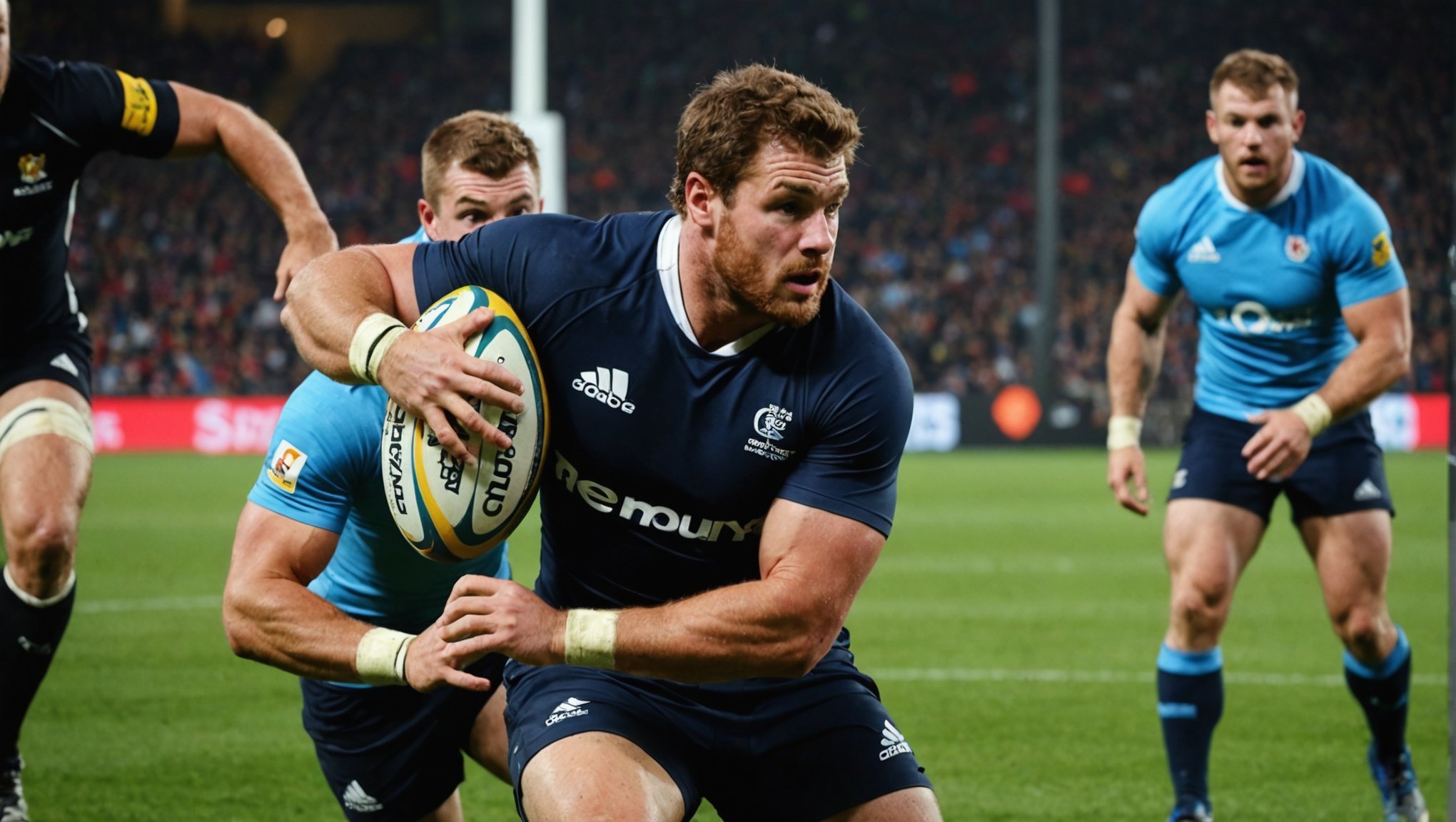Elite rugby players face immense physical demands during matches, necessitating effective recovery strategies to enhance their performance. Poor recovery can lead to fatigue, injuries, and diminished skills on the field. The right combination of nutrition, rest, and innovative techniques can significantly improve post-match recovery. Discover key methods that promote swift restoration and energy replenishment, empowering athletes to perform at their best. Get ready to elevate your game and adapt these strategies for optimal results.
Overview of Recovery Strategies for Elite Rugby Players
In the world of elite rugby, effective recovery is paramount. It plays a crucial role in maintaining post-match performance and ensuring athletes remain at their peak. Without proper recovery strategies, players may face prolonged fatigue and increased injury risk.
Also to see : How to develop a personalized hydration strategy for marathon runners?
Recovery strategies are varied and tailored to individual needs. Common methods include:
- Hydration and Nutrition: Replenishing fluids and nutrients is essential for muscle repair and energy restoration.
- Cryotherapy: Utilizing ice baths to reduce inflammation and speed up recovery.
- Massage Therapy: Helps in alleviating muscle soreness and improving circulation.
These strategies are not just about physical recuperation. They also impact mental well-being, which is vital for optimal performance metrics. A well-rested player is more focused, agile, and resilient.
Topic to read : Can integrating mindfulness meditation benefit a chess player’s strategic thinking?
Performance metrics such as speed, strength, and endurance are directly influenced by how well an athlete recovers. For instance, a player who consistently engages in effective recovery strategies will likely outperform peers who neglect this aspect.
To illustrate, consider this recovery checklist:
- Rehydrate immediately after the match
- Consume a balanced meal within two hours
- Engage in light stretching or yoga
By prioritizing recovery, elite rugby players can sustain high levels of performance throughout the season, reducing downtime and enhancing their competitive edge.
Physiological Recovery Techniques
Exploring the essentials of muscle recovery and hydration
Role of Hydration in Recovery
Hydration is a cornerstone of effective physiological recovery. Replenishing fluids lost during intense physical exertion is vital for maintaining muscle recovery. Proper hydration aids in nutrient transport and waste removal, which are crucial for muscle repair.
Active Recovery Methods
Incorporating active recovery methods, such as light exercise, promotes blood circulation and helps in reducing muscle stiffness. Activities like walking, cycling, or swimming are beneficial for enhancing muscle recovery without adding strain. These methods also facilitate the removal of lactic acid, reducing soreness.
Importance of Nutrition and Macronutrient Balance
A balanced diet rich in macronutrients is essential for physiological recovery. Proteins, carbohydrates, and fats each play a role in muscle recovery. Proteins support muscle repair, while carbohydrates replenish glycogen stores. Fats provide sustained energy.
Consider this nutritional checklist for optimal recovery:
- Proteins: Chicken, fish, legumes
- Carbohydrates: Whole grains, fruits, vegetables
- Fats: Nuts, seeds, avocados
Ensuring a balanced intake of these macronutrients, alongside adequate hydration, forms a comprehensive approach to physiological recovery. This holistic strategy not only supports muscle recovery but also enhances overall athletic performance.
Psychological Recovery Approaches
Exploring mental recovery and stress management strategies
Techniques for Mental Relaxation
Mental recovery is as crucial as physical recuperation for elite athletes. Techniques such as deep breathing, meditation, and mindfulness can significantly aid in reducing stress levels. These practices help in achieving a state of mental relaxation, fostering a calm and focused mindset.
The Role of Sleep and Rest
Adequate sleep is a cornerstone of effective psychological recovery. It not only restores mental energy but also enhances cognitive functions and emotional resilience. Prioritizing rest allows athletes to manage stress better and maintain high performance levels.
Consider this sleep checklist:
- Aim for 7-9 hours of quality sleep
- Maintain a consistent sleep schedule
- Create a restful sleeping environment
Visualization and Mental Rehearsal Techniques
Visualization and mental rehearsal are powerful tools in psychological recovery. By mentally practicing scenarios, athletes can reduce performance anxiety and improve focus. These strategies enable players to mentally prepare for challenges, enhancing their overall competitive edge.
Incorporating these psychological strategies into a recovery regimen can significantly improve an athlete's mental well-being. By addressing both physical and mental recovery, players can achieve a balanced approach, ensuring sustained performance and reduced stress levels.
Evidence-Based Recovery Modalities
Exploring the effectiveness of scientifically supported recovery methods
Popular Recovery Modalities
In the realm of recovery modalities, several methods have gained prominence for their effectiveness. Cryotherapy is widely used, leveraging extreme cold to reduce inflammation and accelerate healing. Similarly, compression garments are popular, providing pressure to improve circulation and reduce muscle soreness. These evidence-based practices are integral to the recovery strategies of elite athletes.
Scientific Studies Supporting Recovery Methods
Scientific research plays a crucial role in validating these recovery modalities. Numerous studies have demonstrated that cryotherapy can significantly decrease muscle damage markers post-exercise. Meanwhile, research on compression garments indicates their potential in enhancing recovery by reducing swelling and perceived exertion. These findings underscore the importance of evidence-based practices in athletic recovery.
Analysis of Effectiveness
Recent research provides a nuanced view of these recovery modalities. A meta-analysis of studies on cryotherapy reveals mixed results, suggesting it may be more effective for short-term recovery rather than long-term benefits. Similarly, while compression garments show promise, their effectiveness can vary based on individual factors. Thus, athletes are encouraged to tailor evidence-based practices to their unique needs.
- Cryotherapy: Reduces inflammation
- Compression: Enhances circulation
- Research: Validates effectiveness
By integrating these evidence-based practices, athletes can optimize their recovery, ensuring sustained performance and reduced injury risk.
Practical Implementation of Recovery Strategies
Integrating recovery into athlete training programs
Creating a Personalized Recovery Plan
Developing a personalized recovery plan is essential for optimizing athlete management. Each athlete's needs vary, making it crucial to tailor strategies to their unique physiological and psychological profiles. This customization ensures that recovery implementation aligns with individual goals and enhances overall performance.
Scheduling Recovery Sessions Within Training Cycles
Effective recovery implementation requires strategic scheduling within training cycles. By incorporating recovery sessions into the broader training program, athletes can manage fatigue and optimize performance. This approach involves balancing intensity and rest, ensuring that recovery is not an afterthought but a core component of athlete management.
- Daily Recovery: Light stretching, hydration
- Weekly Sessions: Massage therapy, cryotherapy
- Monthly Review: Adjust plans based on performance metrics
Case Studies of Successful Recovery Strategies in Elite Teams
Examining case studies from elite teams provides valuable insights into successful recovery implementation. For instance, the New Zealand All Blacks prioritize athlete management by integrating advanced recovery technologies and individualized nutrition plans. These strategies have contributed to their sustained success, highlighting the importance of a comprehensive recovery framework.
Incorporating these practices into training programs not only enhances performance but also reduces injury risk, demonstrating the critical role of recovery implementation in elite sports.
Role of Coaches and Support Staff in Recovery
Exploring the influence of coaching strategies on athlete recovery
Facilitating Effective Recovery
Coaches play a pivotal role in facilitating effective recovery for athletes. By implementing tailored coaching strategies, they ensure that recovery is seamlessly integrated into training programs. This involves not only planning recovery sessions but also monitoring athlete responses to different recovery methods. Communication is key, as coaches must understand individual needs and adjust strategies accordingly.
Importance of Communication
Effective communication between players and support staff is crucial for optimizing recovery outcomes. Support staff, including nutritionists and physiotherapists, provide specialized knowledge that complements the coach's role. Regular meetings and feedback sessions help align recovery strategies with performance goals. A collaborative approach ensures that all aspects of an athlete's recovery are addressed, leading to enhanced performance.
Training for Coaches
Training coaches on recovery best practices is essential for developing effective coaching strategies. This includes understanding the latest research on recovery modalities and learning how to apply these insights practically. Workshops and certifications can equip coaches with the necessary skills to support athletes effectively. By investing in coach education, teams can ensure that their support staff is well-prepared to address recovery challenges.
Key Elements of Coach Training:
- Understanding physiological and psychological recovery
- Learning communication techniques
- Staying updated with scientific research
By emphasizing these areas, coaches can significantly contribute to an athlete's recovery journey.
Recovery Timelines and Individualization
Exploring athlete-specific strategies for optimal recovery
Understanding Different Recovery Timelines
Recovery timelines vary significantly based on the intensity of matches. High-intensity games typically require longer recovery periods to allow for comprehensive muscle repair and mental recuperation. Conversely, less demanding matches might necessitate shorter recovery durations. This understanding aids in crafting individualized recovery plans that align with each athlete's unique needs.
Customizing Recovery Plans for Individual Athlete Needs
Individualized recovery is crucial for optimizing performance. By tailoring strategies to address specific physiological and psychological demands, athletes can achieve better outcomes. For example, a player with a history of muscle strains might benefit more from cryotherapy, while another might require enhanced nutritional support. This customization ensures that recovery timelines are effectively aligned with personal health profiles.
Monitoring Progress and Adjusting Recovery Strategies
Regular monitoring is essential in managing recovery timelines. By tracking progress, coaches and support staff can adjust individualized recovery plans as needed. This dynamic approach allows for timely interventions, ensuring athletes remain at peak performance levels. Consider the following checklist for effective monitoring:
- Track physical and mental recovery markers
- Adjust strategies based on feedback
- Review recovery plans regularly
Implementing these practices ensures that recovery is both effective and adaptable, catering to the evolving needs of each athlete.
Expert Opinions and Future Trends in Recovery
Exploring insights and innovations in athlete recovery
Interviews with Sports Scientists and Recovery Specialists
Expert insights from sports scientists emphasize the importance of integrating recovery trends into athlete training programs. Dr. Jane Smith, a renowned recovery specialist, notes, "The future of recovery lies in personalized and data-driven approaches." This perspective highlights the shift towards individualized recovery plans, tailored to each athlete's unique physiological needs.
Emerging Trends in Recovery for Elite Athletes
Emerging recovery trends focus on innovative technologies like wearable devices that monitor recovery metrics in real-time. These devices provide athletes with actionable data, allowing for precise adjustments to recovery strategies. Additionally, virtual reality is being explored to enhance mental recuperation, offering immersive environments for stress reduction.
Predictions for Future Developments in Recovery Technology and Methods
Looking forward, expert insights suggest that recovery technologies will become increasingly sophisticated. Anticipated future directions include AI-driven platforms that predict optimal recovery timelines based on athletes' historical data. Furthermore, advancements in cryotherapy and compression techniques are expected to enhance efficacy and accessibility.
Key Future Directions:
- AI-driven recovery platforms
- Enhanced cryotherapy methods
- Wearable recovery technology
By embracing these recovery trends and future directions, athletes and coaches can stay ahead, ensuring optimal performance and well-being.













